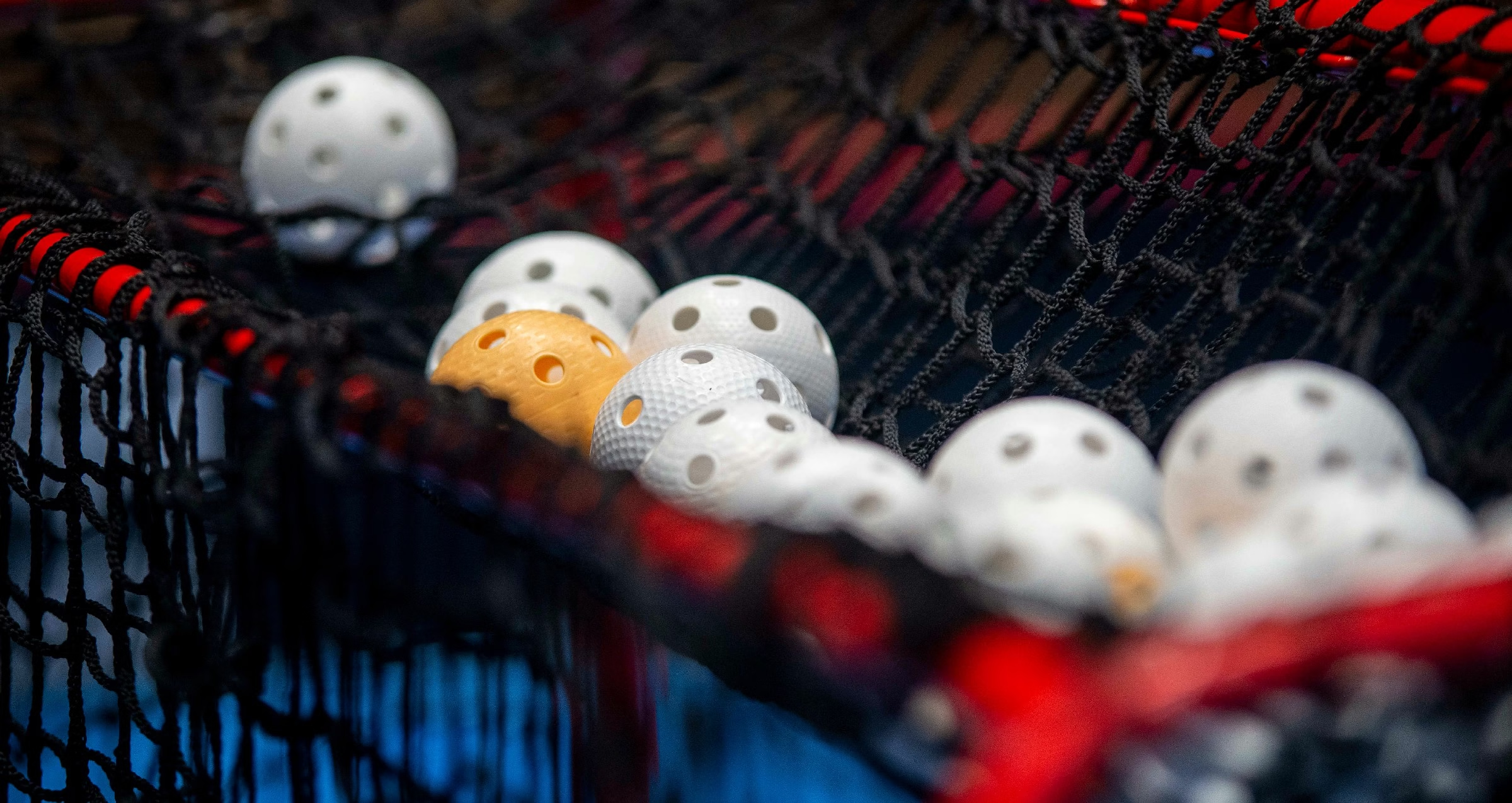Blog
how do you keep score on pickleball

Keeping Score in Pickleball: A Game of Numbers and Strategy
In the world of pickleball, where the vibrant sound of paddles striking a wiffle ball fills the air and the excitement of friendly competition reigns supreme, understanding the intricacies of scoring becomes essential for players of all skill levels. Whether you’re a seasoned veteran or a curious newcomer, grasping how to keep score is crucial for engaging in this rapidly growing sport. From singles matches to exhilarating doubles showdowns, the scoring system not only adds a layer of strategy to each game but also fosters camaraderie among players. in this article, we will unravel the fundamentals of scoring in pickleball, illuminating the rules, formats, and tips that will help enhance your gameplay and keep the tension high on the court. So, grab your paddle, and let’s dive into the numbers that define the game!
Table of Contents
- Understanding the Basics of Pickleball Scoring
- Navigating the Unique Points System in pickleball
- The role of Serving in scorekeeping
- Clarifying Game Format and Score Progression
- Strategies for Keeping Accurate Score During Play
- Tips for Resolving Scoring Disputes with Opponents
- Q&A
- Key Takeaways
Understanding the Basics of Pickleball Scoring
In pickleball, understanding the scoring system is key to enjoying the game fully. Unlike traditional tennis, which uses a 15-30-40 scoring system, pickleball employs a more simplified approach. Players score points only when they serve, and the game goes to 11 points (though some matches can go to 15 or 21). To win, a team must maintain a minimum lead of two points. This straightforward scoring method encourages players to focus on both the strategic and social aspects of the game.
When playing, it’s essential to communicate your score clearly before each serve. The score is announced in a sequence that includes three numbers: the serving team’s score, the receiving team’s score, and the server number. The typical format sounds like this: “X-Y-Z”, where X is the score of the serving team, Y is the score of the receiving team, and Z indicates whether it’s the first or second serve.For example, a score of 4-2-1 would mean the serving team has 4 points, the receiving team has 2 points, and it’s the first serve for that team.
To further clarify, here’s a simple table illustrating how scoring works in a typical pickleball game:
| Situation | Score Proclamation |
|---|---|
| Serving Team: 5, Receiving Team: 3, First Serve | 5-3-1 |
| Serving Team: 7, Receiving Team: 4, Second Serve | 7-4-2 |
| serving Team: 10, Receiving Team: 8, First Serve | 10-8-1 |
As players become familiar with this system, they will also learn about the rules governing when points can be scored. It’s crucial to note that the Non-Volley Zone (or kitchen) plays a pivotal role, as players cannot score from within it unless they are sending the ball back after a bounce. This adds an exciting layer of strategy and skill to pickleball and makes understanding its scoring rules even more vital for both new and experienced players.
Navigating the Unique Points System in Pickleball
The scoring system in pickleball can initially seem intricate, but once you grasp its essence, it flows seamlessly alongside the game. Points are only awarded to the serving team, making it crucial for players to focus their strategy on winning the serve. If the serving team wins a rally, they receive a point and continue to serve, shifting the serve between players on the team after each point. Conversely, if the receiving team wins the rally, they gain the prospect to serve, thereby resetting the scoring dynamics.
Understanding the nuances of the score is equally meaningful. the game typically plays to 11 points, but you must win by at least 2 points, which adds an exciting twist in close matches. here’s a handy quick reference table for better clarity:
| Condition | Required Points |
|---|---|
| Regular Play | 11 points |
| Tiebreaker | At least 13 points |
| Winning Margin | must win by 2 points |
adding to the complexity is the unique way teams switch sides after a certain point threshold, typically when one team reaches 6 points. This strategic aspect not only influences gameplay but also allows teams to adapt to varying court conditions, such as differing sunlight or wind. Remember, interaction and awareness of the score are vital; always announce the score clearly before serving to ensure everyone is on the same page. Keeping these elements in mind will not only improve your gameplay experience but also enhance your understanding of this engaging sport.
The Role of Serving in Scorekeeping
In the vibrant world of pickleball, serving plays a crucial role not just in gameplay dynamics but also in the integrity of scorekeeping. The moment the server tosses the ball into the air, every player on the court must be alert and ready; this is the starting point from which the score begins to unfold. Each serve can perhaps shift the momentum of a game,making it essential for both players and observers to maintain an accurate score. The server must call out their score before serving, thereby setting the stage for a fair contest.
Scores in pickleball are recorded in a specific format that includes the server’s score, the receiver’s score, and the server’s number.As an example, if the score is 3-2 with the server being in the first position, the server will announce “3-2-1” before the serve. This ensures clarity amongst players and spectators, eliminating confusion during critical moments of the match. Effective communication fosters a smoother game,allowing both teams to focus on their strategies without distraction.
Moreover, proper scorekeeping is an art that enhances the overall experience of playing or watching pickleball. Key advantages include:
- gratitude for the game’s flow through accurate tracking.
- Boosting player accountability, as everyone is aware of the current score.
- Facilitating strategic decisions based on the emerging scoreline.
| Score Format | Example | Explanation |
|---|---|---|
| player Score-Receiver Score-Server Number | 3-2-1 | The server’s score is first, followed by the receiver’s score, and finally the server’s number. |
| 0-0-2 | 0-0-2 | Indicates a reset state, meaning players are beginning the game, and the second server is serving. |
Clarifying Game Format and Score Progression
In the world of pickleball, understanding the game format is crucial for both newcomers and seasoned players. Matches can be played in various formats, including singles, doubles, or even mixed doubles. Each format presents its own strategies and requires players to adapt their scoring tactics accordingly. Generally, a game is played to 11 points, where a team must win by at least two points. Though, in tournament settings, games might potentially be played to 15 or 21 points, enhancing competitiveness and strategic depth.
When it comes to scoring, it’s essential to highlight the three types of scores you might encounter:
- Rally Scoring: Points can be scored by either the serving or receiving team. This format increases the pace of play and keeps everyone engaged.
- Traditional Scoring: Only the serving team can earn points. This adds pressure to the serve, making each point feel more significant.
- Side Out Scoring: Similar to traditional scoring, but when the serving team fails to score, they lose their serve and the game continues.
the scoring progression in pickleball also follows a specific sequence which is vital to keep track of during games. Players begin with a 0-0-0 score, where the first numeral represents the serving team’s score, the second numeral is the receiving team’s score, and the last numeral indicates which server is currently serving.As an example:
| Score | Description |
|---|---|
| 0-0-2 | Game start,second server,first rotation. |
| 5-3-1 | First serving team at 5 points, second team at 3 points. |
| 10-10-1 | tied, first server, game point looming. |
Strategies for Keeping Accurate Score During Play
Accurate scorekeeping in pickleball is essential for maintaining the flow of the game. One effective strategy is to implement a scoring system that both players can easily understand and reference. This can be done by designating a scorekeeper, or rotating the responsibility among players in casual games. This not only ensures the score is consistently monitored but also encourages communication about the current standing. A simple system can include:
- Call Out the Score: Players should regularly call out the score before serving to avoid confusion.
- Use Visual Aids: Keeping a small whiteboard or score pad to track points can definately help everyone stay on the same page.
- Designate a Match Timekeeper: Along with scoring, having someone to track the time allows for fair play in timed matches.
To further enhance accuracy, players can adopt a mnemonic approach to remember the score specifics. For example, relating scores to significant personal milestones or events may help players bond over the game while keeping a mental tally. Additionally, incorporating scoring cues—such as making eye contact or giving a thumbs up each time a score is registered—can reinforce the memory of which player holds the current point. Grouping points can also help clarify the state of the game:
| Score Terms | Meaning |
|---|---|
| Zero (0) | No points scored yet |
| One (1) | First point scored |
| Two (2) | Second point scored |
it is indeed beneficial to stay calm and composed, especially during close matches where emotions may escalate.Establishing a respectful dialogue and periodically confirming the score with your opponent can definitely help prevent disputes. A simple recap of the current score after every five points, or during breaks between games, reinforces understanding and minimizes potential errors. By combining these strategies, players can keep a clear and accurate score, allowing everyone to focus on the joy of the game.
Tips for resolving Scoring Disputes with Opponents
When it comes to scoring disputes in pickleball,communication is key. Players should maintain a respectful dialogue while discussing any disagreements. Rather than letting emotions take over, consider pausing the game for a moment to clarify the score with everyone involved. This collaborative approach fosters a spirit of teamwork and ensures each player feels heard,which can defuse tension effectively.
Another useful strategy is to keep a written record of the score during the game. by designating one player to jot down key points or significant changes in the score, you can establish a reliable reference point if a dispute arises. A simple notepad or even a smartphone can serve this purpose well. Here’s a quick example of how to structure this record:
| Game Number | Score | Notes |
|---|---|---|
| 1 | 11-9 | Team A won |
| 2 | 10-12 | Team B called time-out |
agreeing on a third-party mediator can also help resolve scoring disputes. If both teams are struggling to reach an agreement, having an impartial observer can bring clarity to the situation. This individual can offer an unbiased perspective, facilitating a resolution that both parties can accept. Establishing this guideline before the game starts can prevent misunderstandings, ensuring a smoother and more enjoyable experience for all players involved.
Q&A
Q&A: How Do You Keep Score in Pickleball?
Q: What is the basic scoring system in pickleball?
A: In pickleball, the scoring system is fairly simple yet unique. The game is typically played to 11 points, but a team must win by at least 2 points. players can score points only when their team is serving. If the serving team wins a rally, they earn a point; if they lose it, the serve passes to the other team.
Q: How do you determine which team serves first?
A: Before the match begins, players decide who serves first, usually through a coin toss or some friendly banter. Once the game starts, the team that wins the toss will have the choice to serve or receive. This decision can set the tone for the game!
Q: Can you explain the concept of “side-out” in pickleball?
A: Absolutely! A “side-out” occurs when the serving team loses a rally. When this happens, the serve switches to the opposing team, and they become the new serving team. It’s pivotal in the game, as this is how scoring can shift from one team to another. Each player on the new serving team will also get a chance to serve, except for the first serve of the game.
Q: What’s the deal with double scoring in pickleball?
A: In double pickleball, things get even more captivating! when a team is serving, the score is announced in a three-part format: the serving team’s score, the receiving team’s score, and the server number (either 1 or 2). For example, if the score is 5-3 and it’s the first server’s turn, you’d announce it as “5-3-1.” If the first server loses the point, the second server will then take their turn.If the second server also loses, that’s a side-out!
Q: Are there different ways to keep track of scores during a game?
A: Certainly! Players frequently enough use clipboards, scoreboards, or even just a handy notepad to keep score visually.Some may prefer to announce points aloud, while others opt for keeping it more low-key and tracking silently among themselves. The most important part is clarity, so everyone is aware of the current score.
Q: What happens if the score reaches 10-10?
A: When the score reaches 10-10, known as “game point,” the next point scored is crucial. The game continues until one team establishes a two-point lead, so players typically experience heightened intensity and focus at this juncture. It’s the thrill of the chase combined with the potential for a nail-biting finish!
Q: Are there special scoring rules for tournaments or high-level play?
A: Yes! In tournament settings, the rules can be a tad more complex. For instance, matches might be played to 15 or 21 points, and players may need to win by 2. It’s also essential to double-check any specific scoring rules set by the tournament organizers as they can have their own unique regulations to ensure fair play.
Q: How can beginners ensure they’re scoring accurately?
A: For beginners, practicing together and keeping the flow of communication open is key. It’s helpful to verbally call out the score after each rally, ensuring everyone is on the same page. Utilizing a designated scorekeeper or using visual aids can also reduce confusion and make the game more enjoyable.
Q: Any final tips for mastering the art of scoring in pickleball?
A: Absolutely! Regular practice helps familiarize you with the nuances of scoring, so don’t hesitate to play frequently enough. Reviewing the official pickleball rules and watching seasoned players can also provide insights. The most important takeaway? Have fun! Score keeping should enhance your playing experience,not complicate it.
Key Takeaways
mastering the art of scoring in pickleball is as essential as perfecting your serve or refining your footwork. Whether you’re a seasoned player or a newcomer to the court, understanding the nuances of scoring not only enhances your gameplay but also enriches your overall experience of this fast-paced, engaging sport. Remember, the heart of pickleball lies not just in competition but in the camaraderie and fun shared with fellow players. So, embrace the scoring systems, and let them guide you as you rally your way to victory. now, grab your paddle, gather your friends, and enjoy the vibrant spirit of pickleball—where every point is a step toward not just scoring, but also forming lasting memories. Happy playing!












